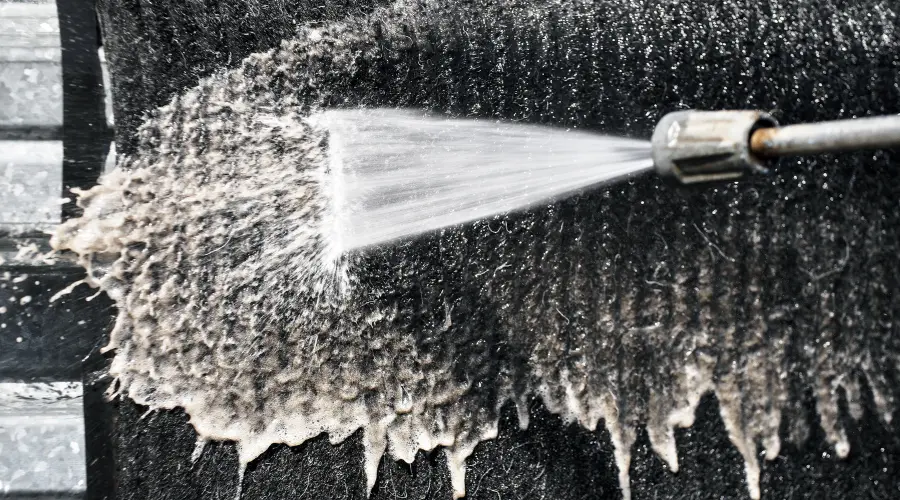In recent years, the realm of interior design has experienced a notable transformation, marked by a growing emphasis on sustainable and eco-friendly alternatives. As our awareness of environmental impacts continues to deepen, it becomes imperative to. extend our green initiatives to every aspect of our lives, including the paints we choose for our homes. In this guide, we’ll explore the history of paints, identify the most eco-friendly options, and provide practical tips on choosing the best eco-friendly paints for your next project.
Experience the joy of a newly painted home! CCT Apex House Painting brings life and color to your living spaces.
A Brief History of Paint
Before delving into the world of eco-friendly paints, let’s take a moment to appreciate the evolution of this indispensable part of our lives. The history of paint dates back to ancient civilizations, where natural materials like plant extracts and minerals were used to add color to various surfaces. Over time, the industry progressed, introducing oil-based and, later, water-based paints.
However, conventional paints often contain harmful ingredients such as volatile organic compounds (VOCs), heavy metals, and solvents. These components release toxic fumes into the air, contributing to indoor air pollution and posing health risks. Recognizing these issues, the demand for eco-friendly paints has surged recently.
What is the Most Eco-Friendly Paint?
When it comes to eco-friendly paints, one option stands out: water-based or latex paints. These paints have a lower environmental impact compared to their oil-based counterparts. They contain fewer VOCs, making them a more environmentally friendly option that promotes well-being for both the planet and individuals applying them. Water-based paints are easy to clean, have a faster drying time, and emit fewer harmful fumes.
How to Choose Eco-Friendly Paints
Choosing eco-friendly paints involves considering several factors to ensure your selection aligns with sustainability goals. Here are some essential tips to guide you through the process:
- Check the Labels: Look for paints labeled “low-VOC” or “zero-VOC.” These designations indicate that the paint contains fewer or no volatile organic compounds, minimizing its environmental impact.
- Natural and Non-Toxic Ingredients: Opt for paints made from natural and non-toxic ingredients. These paints are often derived from plant-based sources, reducing the use of synthetic chemicals.
- Recyclable Packaging: Consider the packaging of the paint. Eco-friendly options use recyclable materials, reducing waste and promoting a circular economy.
- Certifications: Look for certificates from reputable organizations such as GREENGUARD or Cradle to Cradle. These certifications ensure that the paint meets specific environmental and health standards.
- Local and Sustainable Sourcing: Choose paints that prioritize local and sustainably sourced ingredients. This not only reduces the carbon footprint but also supports local economies.
Types of Best Eco-Friendly Paints
- Water-Based Paints: As mentioned earlier, water-based or latex paints are among the most eco-friendly options. They are versatile, low in VOCs, and have a minimal environmental impact.
- Milk Paint: Crafted from naturally occurring elements such as milk protein lime, and pigments, milk paint is a biodegradable and non-toxic option. It has been used for centuries and provides a unique, matte finish.
- Clay Paint: Clay paints are derived from natural clay, minerals, and natural pigments. They are breathable, allowing moisture to pass through, and are an excellent option for creating a textured, earthy look.
- Plant-Based Paints: These paints use plant-based ingredients like soy and other renewable resources. They are a sustainable alternative to traditional paint and often have minimal environmental impact.
Choosing the right paints for your home is a small yet impactful step in the quest for a sustainable and eco-friendly lifestyle. By opting for water-based or other eco-friendly paint options, you contribute to a healthier environment, reduce indoor air pollution, and support the growth of a more sustainable industry.
As consumers, we have the power to influence the market and encourage the adoption of eco-friendly practices. So, the next time you embark on a painting project, consider the impact of your choice and make a conscious decision to go green. In doing so, you transform your living spaces and play a part in fostering a more vibrant and eco-friendly future for our planet.







